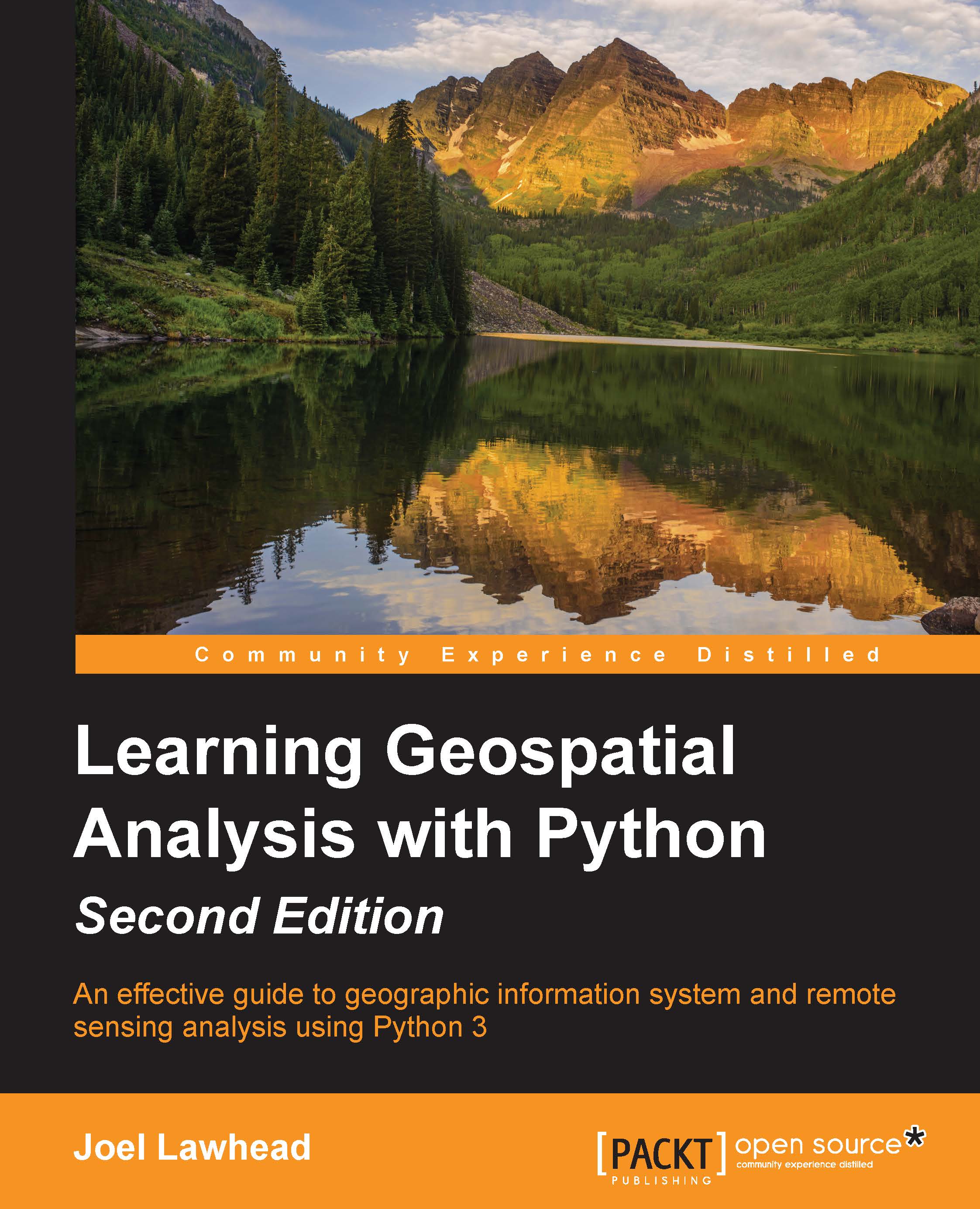Geospatial analysis and computer programming
Modern geospatial analysis can be conducted with the click of a button in any of the easy-to-use commercial or open source geospatial packages. So then, why would you want to use a programming language to learn this field? The most important reasons are as follows:
- You want complete control of the underlying algorithms, data, and execution
- You want to automate specific, repetitive analysis tasks with minimal overhead from a large, multipurpose geospatial framework
- You want to create a program that's easy to share
- You want to learn geospatial analysis beyond pushing buttons in software
The geospatial industry is gradually moving away from the traditional workflow in which teams of analysts use expensive desktop software to produce geospatial products. Geospatial analysis is being pushed towards automated processes that reside in the cloud. End user software is moving towards task-specific tools, many of which are accessed from mobile devices. Knowledge of geospatial concepts and data as well as the ability to build custom geospatial processes is where the geospatial work in the near future lies.
Object-oriented programming for geospatial analysis
Object-oriented programming is a software development paradigm in which concepts are modeled as objects that have properties and behaviors represented as attributes and methods, respectively. The goal of this paradigm is more modular software in which one object can inherit from one or more other objects to encourage software reuse.
The Python programming language is known for its ability to serve multiple roles as a well-designed, object-oriented language, a procedural scripting language, or even a functional programming language. However, you never completely abandon object-oriented programming in Python because even its native data types are objects and all Python libraries, known as modules, adhere to a basic object structure and behavior.
Geospatial analysis is the perfect activity for object-oriented programming. In most object-oriented programming projects, the objects are abstract concepts such as database connections that have no real-world analogy. However, in geospatial analysis, the concepts modeled are, well, real-world objects! The domain of geospatial analysis is the Earth and everything on it. Trees, buildings, rivers, and people are all examples of objects within a geospatial system.
A common example in literature for newcomers to object-oriented programming is the concrete analogy of a cat. Books on object-oriented programming frequently use some form of the following example.
Imagine that you are looking at a cat. We know some information about the cat, such as its name, age, color, and size. These features are the properties of the cat. The cat also exhibits behaviors such as eating, sleeping, jumping, and purring. In object-oriented programming, objects have properties and behaviors too. You can model a real-world object such as the cat in our example or something more abstract such as a bank account.
Most concepts in object-oriented programming are far more abstract than the simple cat paradigm or even the bank account. However, in geospatial analysis, the objects that are modeled remain concrete, such as the simple cat analogy, and in many cases are living, breathing cats. Geospatial analysis allows you to continue with the simple cat analogy and even visualize it. The following map represents the feral cat population of Australia using data provided by the Atlas of Living Australia (ALA):


































































